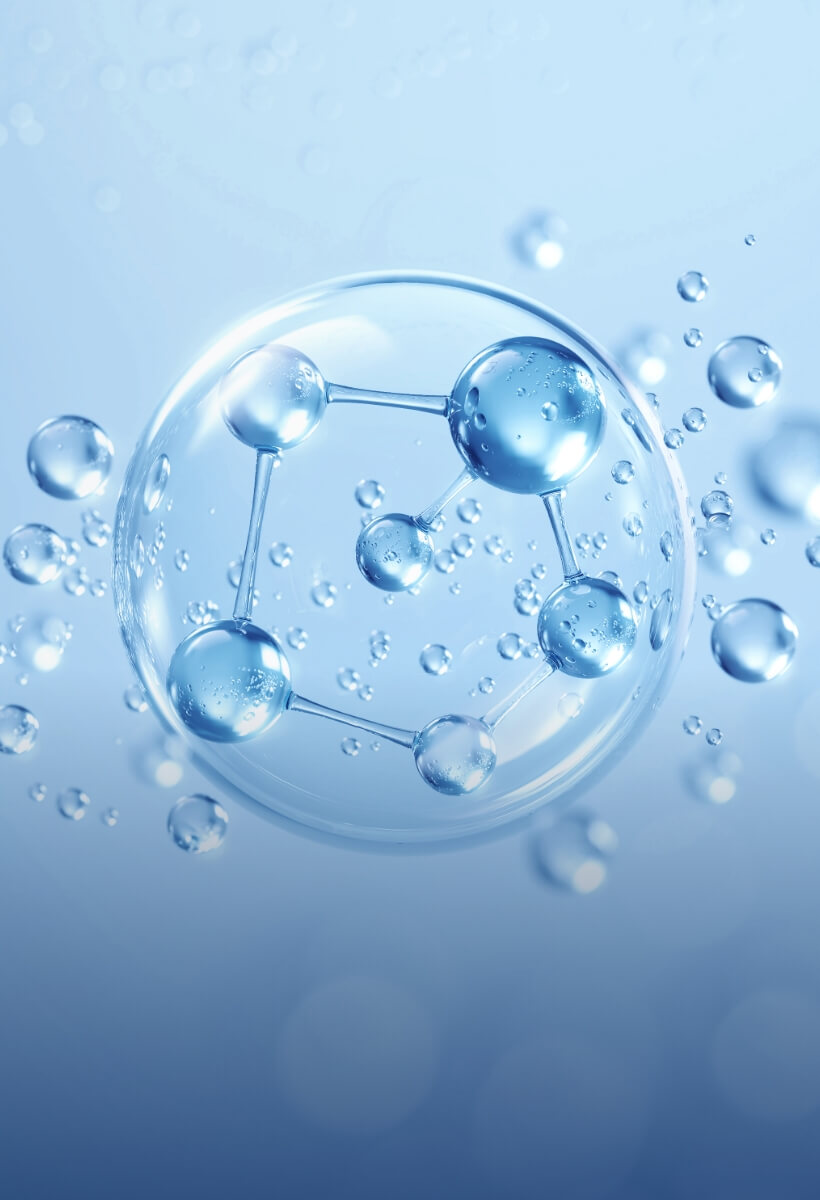Expanding our competencies, unlocking opportunities
We have the experience and proficiency to develop, simplify and commercialize an extensive range of complex chemical processes. Our wide range of chemistry expertise enables us to efficiently manufacture more customized products to meet our customers’ needs. Our competency in chemistry includes:

Acylation
We perform Acylation at a multi-thousand-ton scale using Aluminium Chloride (AlCl₃) and Acetyl Chloride.

Alkylation
Our Alkylation capabilities utilize the following:

Amination
Amination is performed on a multi-thousand-ton scale using Hydrogenation and Iron Reduction methods. Our Amination processes include:

Aminolysis
Aminolysis is a chemical reaction where a halogen group is replaced by an Amine group. We conduct this reaction on a multi-thousand-ton scale under pressures of up to 55 bar at high temperatures.

Balz-Schiemann Reaction
We have developed a continuous Balz-Schiemann process using Sodium Nitrite and NSA in the presence of HBF₄ and HF.

Bromination
Bromination is performed on a large scale using HBr and Bromine. Our Bromination capabilities include Sandmeyer Reaction.

Chiral Chemistry
Chiral Chemistry involves the study of chiral molecules, which are not superimposable on their mirror images. We offer capabilities that utilize weak bases and achieve enhanced optical purity through Condensation, Process Optimization, and Enzyme-Based methods.

Chlorination
We perform Chlorination on a multi-thousand-ton scale using both Batch and Continuous processes, employing Chlorine Gas, HCl Gas, Thionyl Chloride, Sulfuryl Chloride, Phosphorus Trichloride, Phosphorus Pentachloride, Phosphoryl Chloride, and Triphosgene. Our capabilities include both Vapor-Phase and high-temperature Chlorination.

Claisen Condensation
Claisen Condensation is a Carbon-Carbon bond-forming reaction between two Esters, where one Ester acts as a Carbonyl Compound.

Cryogenic Reactions
We currently perform Cryogenic Reactions at temperatures ranging from -30°C to -40°C, with plans to reach temperatures between -50°C and -60°C.

Cyclization
Cyclization is a chemical reaction where one or more rings are formed in a molecule, utilizing reagents such as Acetic Anhydride, Urea, Formic Acid, Glycol (for Ketal Reactions), and Glycerol.

Denitrochlorination
It is a chemical process involving the removal of nitro groups (-NO₂) from organic compounds using chlorine gas or a chlorinating agent.

Diazotization and Hydrolysis
We manufacture on a multi-thousand-ton scale using Continuous processes and are among the few companies globally with these capabilities, including:

Esterification
Esterification involves the formation of an Ester from a Carboxylic Acid and an Alcohol, typically in the presence of an Acid Catalyst. We perform this reaction under both Batch and Continuous Processes.

Etherification
We conduct Etherification on a multi-thousand-ton scale. This includes Ullmann Etherification, where Ethers are synthesized from Aryl Halides in the presence of a Copper Catalyst and a Base.

Fluorination
Our Fluorination capabilities include:

Grignard
Grignard reagents are organometallic compounds used in organic synthesis. These reagents are highly versatile and widely employed for forming carbon-carbon bonds through nucleophilic addition reactions. Anupam Rasayan performs Grignard chemistry and has commercialized Grignard products using magnesium powder, strips and turning. We have expertise in handling acetone, THF and benzonitrile solvents in this reaction.

Hofmann Rearrangement
The Hofmann Rearrangement involves the reaction of an Amide with a Halogen (Chlorine or Bromine) in a strongly basic medium, converting the Amide into an Amine.

Hydrogenation
We offer Hydrogenation capabilities across a range of compounds and conditions, including Acidic Hydrogenation of Fluorinated Compounds.

Ketone Reduction
The ketone reduction involves the conversion of the carbonyl group to the corresponding alkane using reducing agents like sodium borohydride, triethyl silane, and tetramethyl disiloxane, as well as Lewis acids such as aluminium chloride, boron trifluoride-THF, and boron trifluoride-diethyl ether.

Knoevenagel Chemistry
It is a modification of aldol condensation and an addition of active hydrogen compound to the carbonyl group compound followed by dehydration.

Nitration
Nitration is a process that adds a Nitro group to an organic compound. We perform Nitration on a multi-thousand-ton scale using both Batch and Continuous processes, focusing on minimal effluent generation and selectivity. Our Nitration capabilities include:

Oxidation
We perform Chemical Oxidation, Air Oxidation and Photo Chemical Oxidation.

Photo Cycloaddition Reaction
Photo Cycloaddition is a photochemical reaction in which two or more unsaturated molecules combine to form a cyclic product. We have developed this reaction using Flow Photochemistry.

Photochemistry
We have a commercial facility for performing photochemical reactions in continuous mode, including reactions such as Photo Chlorination, Photo Bromination and Photo Oxidation.

Pinner Reaction
The Pinner Reaction is an Acid-Catalyzed reaction where a Nitrile reacts with an Alcohol to form an Imino Ester Salt.

Sandmeyer Reaction
The Sandmeyer Reaction involves converting Aryl Diazonium Salts into various functional groups, such as halides, through substitution reactions.

Schiff Base – Hydrogenation
It is a novel process utilizing schiff base, enabling us to perform two hydrogenation stages into a single step in-situ.

Thiazine Derivatives
It is derived from asymmetrical & substituted diarylamines.

Triazole Condensation
Triazole condensation refers to a process of synthesizing compounds containing triazole rings. Due to their diverse biological and physicochemical properties, triazole derivatives are widely found in pharmaceuticals, agrochemicals, and materials science. Anupam Rasayan has superior competence in handling hexane and dimethyl sulfide solvents in this reaction.

Triphosgene Chemistry
We use triphosgene as a reactant for chlorination & ring closing.

Vilsmeier-Haack Reaction
The Vilsmeier-Haack Reaction involves the reaction of a Substituted Formamide with Phosphorus Oxychloride and Arene to form Aldehyde or Ketone.




